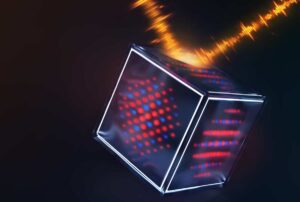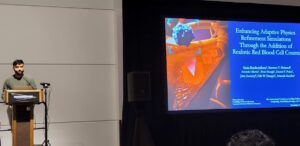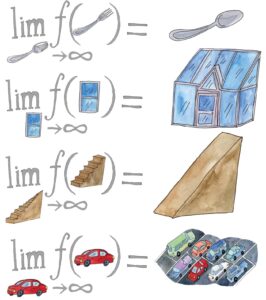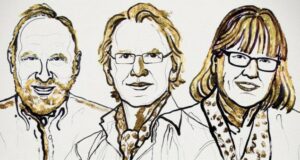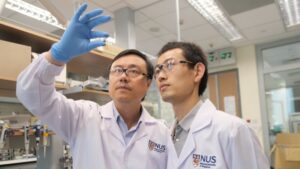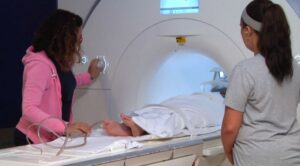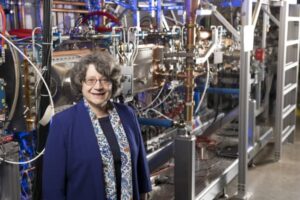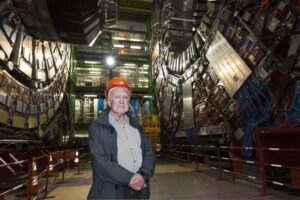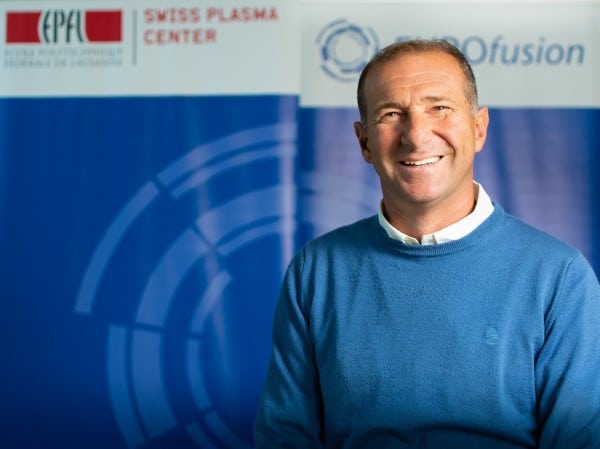
Europe’s new head of fusion wants European nations to work on a demonstration fusion reactor at the same time as building the ITER experimental fusion facility in southern France. Ambrogio Fasoli, who took over in January as head of EUROfusion, says that work on such a device will require closely collaborating with the private fusion industry. EUROfusion is a consortium of 28 fusion labs bringing together 4800 researchers from across Europe.
First mooted in the 1980s, ITER is currently expected to open by the end of 2025. But it will not be until the mid-2030s – at the earliest – that ITER will carry out deuterium-tritium (D-T) plasma experiments. Only then will ITER demonstrate its main aim of achieving a net energy gain of 10 and that nuclear fusion can be a safe, reliable, efficient and relatively clean energy source.
Due to ITER’s delays, some countries have begun to plan their own demonstration fusion plants. The UK for example, is currently designing the Spherical Tokamak for Energy Production to switch on in the 2040s while fusion companies are examining ways to bring fusion energy to the market even earlier.
The European fusion community, which is the leading partner in ITER, is taking a different approach. It wants to wait until ITER is fully operating before designing and building a demonstration reactor that will also produce electricity – a “DEMO” fusion plant. But Fasoli, a plasma physicist who is also director of the Swiss Plasma Center at the EPFL Lausanne, says that Europe must now rethink its strategy.
“If we want to develop DEMO by the middle of the century, we have to proceed as much as possible parallel to ITER, rather than following the current sequential approach that fully depends on ITER milestones,” Fasoli told Physics World. “ITER is a crucial project for fusion research and we have already learned so much from the project that we don’t need to wait to apply these lessons elsewhere.”
Fasoli insists that knowing all the details about ITER’s D-T plasma it not necessary before starting on a DEMO design. “We can prepare a design that can accommodate possible different arrangements of the plasma,” he adds, pointing out that it is possible to use numerical simulations as well as to extrapolate data from current or previous plasma experiments such as JET in Oxfordshire, which performed its last fusion shot last year and has been carrying out ITER-relevant experiments for years.
High-risk, high-reward
Fasoli says that Europe should now work on “solutions” that are high risk but have high potential by balancing consolidated knowledge with innovation. This approach would be similar to the way that private fusion firms are operating with “a sense of urgency”, but he acknowledges that Europe is behind the US when it comes to fostering a private fusion industry.
“This obliges us to be a bit more entrepreneurial and to also work more closely with the private sector, ideally within public-private partnerships,” he says. “We already have the public part, but certainly in Europe we are lacking the private part. For DEMO we need both.”

Petition calls on UK to save JET fusion experiment from closure
Fasoli insists that this partnership would go much further than public entities simply purchasing equipment from the private sector, as currently happens at ITER. “It needs to have common goals, responsibilities and results,” he adds.
Fasoli adds that the potential boom of private fusion in Europe poses a challenge in terms of maintaining and expanding a public sector fusion workforce. “The job market for fusion physicists and engineers is probably larger than ever before, and private companies are often more attractive than public labs, especially for young people,” he says. “So we risk a brain drain.”
To secure and enlarge the influx of talent, Fasoli says that fusion should take inspiration from the European particle-physics community, which have private labs and companies that are “well connected and integrated in academia.”
- SEO Powered Content & PR Distribution. Get Amplified Today.
- PlatoData.Network Vertical Generative Ai. Empower Yourself. Access Here.
- PlatoAiStream. Web3 Intelligence. Knowledge Amplified. Access Here.
- PlatoESG. Carbon, CleanTech, Energy, Environment, Solar, Waste Management. Access Here.
- PlatoHealth. Biotech and Clinical Trials Intelligence. Access Here.
- Source: https://physicsworld.com/a/ambrogio-fasoli-new-european-fusion-boss-wants-a-demonstration-fusion-plant/
- :has
- :is
- :not
- $UP
- 10
- 2025
- 28
- 600
- 90
- a
- About
- Academia
- accommodate
- achieving
- Adds
- aim
- All
- already
- also
- and
- Apply
- approach
- ARE
- arrangements
- AS
- At
- attractive
- balancing
- BE
- been
- before
- begun
- behind
- Bit
- boom
- BOSS
- both
- Brain
- bring
- Bringing
- Building
- but
- by
- Calls
- CAN
- carry
- carrying
- Century
- certainly
- challenge
- clean
- clean energy
- closely
- collaborating
- comes
- Common
- community
- Companies
- connected
- consortium
- countries
- credit
- crucial
- Current
- Currently
- data
- delays
- Demo
- demonstrate
- depends
- Design
- designing
- details
- develop
- device
- different
- Director
- Dont
- drain
- earliest
- efficient
- efforts
- electricity
- elsewhere
- end
- energy
- Engineers
- enlarge
- entities
- entrepreneurial
- equipment
- especially
- Europe
- European
- EVER
- Examining
- example
- expanding
- expected
- experiment
- experimental
- experiments
- Facility
- following
- For
- fostering
- France
- from
- fully
- further
- fusion
- Gain
- Go
- Goals
- happens
- Have
- he
- head
- High
- HTTPS
- ideally
- in
- industry
- influx
- information
- Innovation
- Inspiration
- integrated
- issue
- IT
- ITS
- January
- Job
- jpg
- Knowing
- knowledge
- Labs
- lacking
- larger
- Last
- leading
- learned
- Lessons
- Main
- maintaining
- Market
- max-width
- Middle
- Milestones
- more
- much
- must
- Nations
- necessary
- Need
- needs
- net
- New
- now
- nuclear
- Nuclear fusion
- of
- often
- on
- only
- open
- operating
- or
- out
- over
- own
- Parallel
- part
- partner
- Partnership
- partnerships
- People
- performed
- physicist
- Physics
- Physics World
- plan
- plant
- plants
- Plasma
- plato
- Plato Data Intelligence
- PlatoData
- poses
- possible
- potential
- Prepare
- previous
- private
- Private Companies
- private sector
- probably
- proceed
- produce
- project
- public
- purchasing
- Ramp
- rather
- reactor
- relatively
- reliable
- require
- research
- researchers
- responsibilities
- Results
- Risk
- safe
- same
- Save
- says
- sector
- secure
- sense
- shot
- should
- similar
- simply
- simulations
- small
- So
- some
- Source
- Southern
- Starting
- Strategy
- such
- Switch
- Take
- taking
- Talent
- terms
- than
- that
- The
- the UK
- their
- then
- These
- this
- thumbnail
- time
- to
- together
- told
- took
- true
- Uk
- until
- us
- use
- wait
- want
- wants
- Way..
- ways
- we
- WELL
- when
- which
- while
- WHO
- will
- with
- within
- Work
- Workforce
- world
- would
- years
- young
- zephyrnet

